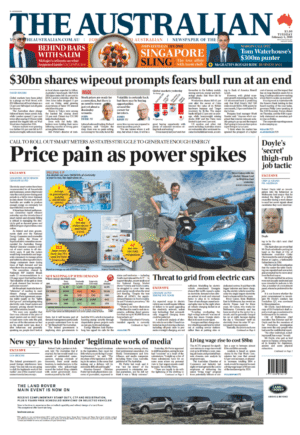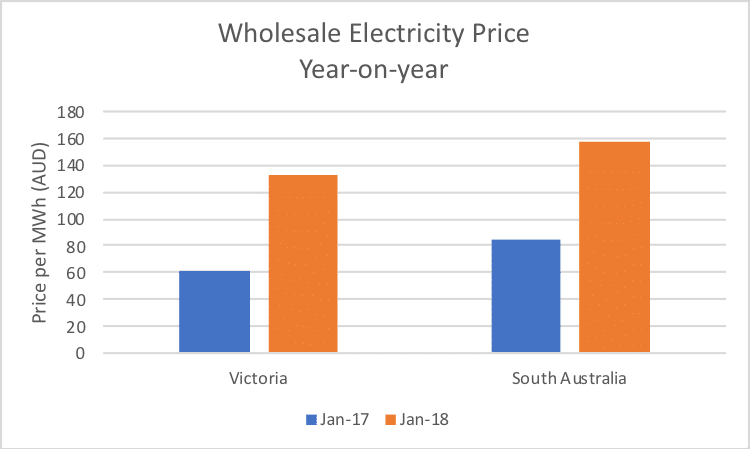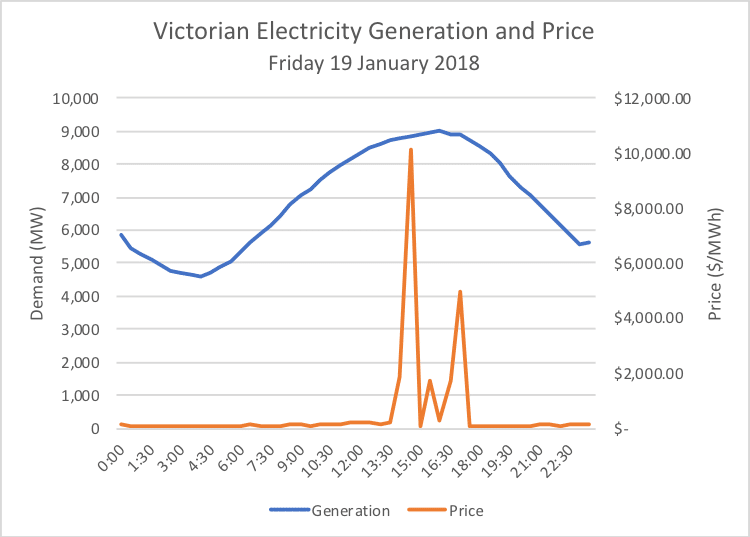Investor News
Smart meter price pain as power spikes

Electricity prices have hit the front page of The Australian... again.
There's no good news. Just more price pain.
And this news comes on the same day that the Australian Energy Market Commission (AEMC) is closing its current round of feedback on its review of the market and regulatory frameworks necessary to support the reliability of the electricity system.
According to the article, a federal parliamentary committee has just released a 133-page report containing a list of 23 recommendations in response to the current crisis.
The committee, chaired by Nationals MP Andrew Broad, confirms that “the reliability of the grid at times of peak demand has become of particular concern”.
The cause?
Australia faced a “trilemma” of needing to meet climate change commitments under the Paris Agreement, ensuring stable supply so the “lights don’t go out”, and mitigating rising electricity costs.
The closure of coal-fired power stations has left South Australia and Victoria precariously exposed to the intermittent nature of wind generation.
In Victoria, the shortfall is around 1,000 megawatts. For SA, it's around 270 megawatts.
The solution so far has been to increase the supply of electricity via expensive diesel generators deployed in South Australia and Victoria.
Gas and hydro have also increased in use. Gas prices are high, so that's contributing to the increased wholesale price.
On the demand side, the report recommends...
"Electricity smart meters... for all households and businesses, a move that would raise the cost of power during peak periods in a bid to lower demand..."
Yet, in the same breath, Mr Broad notes...
"... one of the discussions we had on the smart meter was, does it alter behaviour, and generally speaking, no, people don’t look at them..."
For context, back on the 18th and 19th of January, Victoria and South Australia experienced a couple of hot summer days. The heat caused network failures that blacked our tens of thousands of homes. Thanks to a small surplus of electricity generated by Tasmania and Queensland, the lights stayed on for the remaining homes and businesses. However, the price spike in Victoria exceeded $13,000 per MWh. For context, the average wholesale price for 2017 was $66.58 per MWh. South Australia was even worse, peaking at $14,200.
A quick check of AEMO price tables shows the incredible jump in wholesale prices compared to the same time last year:

Now, the article doesn't say exactly how the 'flexible' pricing via smart meters would impact prices.
It does say the pricing could be changed every 30 minutes.
So, let's take a look at what happened to the wholesale price on 19 January 2018 when the wind dropped off in the face of normal summer demand (remember, that day's demand was ~1,400MW less than Victoria's all-time peak of 10,446MW in 2009).

It will be interesting to see the detail of the smart meter proposal. Do they intend to pass on the full wholesale fluctuation? How much warning will they give? What if you're not home during a sudden 100-fold increase in power price and miss the opportunity to turn off the air conditioner?
Meanwhile, the Federal government is trying to convince the States to adopt their proposed National Energy Guarantee (NEG), which seeks to restore reliability.
Energy Minister Josh Frydenberg has upped his calls for the states and territories — including South Australia and the ACT — to support the plan, as new analysis of the National Energy Market shows Victoria and South Australia struggled to cover their own peak energy needs when the wind isn’t blowing. “Despite the best efforts of AEMO, the supply-demand balance in South Australia and Victoria is precarious,” Mr Frydenberg said.
“There is no better illustration of this than the need to rush in expensive, polluting diesel generators that use up to 80,000 litres an hour as back-up.”
It is ironic that in the pursuit of renewables, SA and Victoria are relying on expensive diesel and gas to keep the lights on.
Our solution? Deliver lower emissions intensity from brown coal via a Coldry-enabled high efficiency, low-emission (HELE) power station while improving reliability and affordability.
Read more...
Smart meter price pain as power spikes
The Australian | Tuesday 6 February 2018 | Samantha Hutchinson & Graham Lloyd
Electricity smart meters have been recommended for all households and businesses, a move that would raise the cost of power during peak periods in a bid to lower demand, as data shows Victoria and South Australia are unable to produce enough energy on extremely hot days with little or no wind.
A bipartisan federal parliamentary committee report released yesterday says the introduction of smart meters and dynamic billing is critical to managing the electricity grid as demand grows and different types of generation come online.
Source ($): Smart meter price pain as power spikes